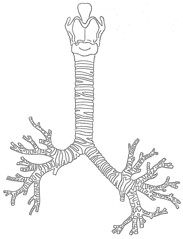Generally, candidates for cartilage transplants are less than 50 years of age with joint damage that needs repairing. For these younger patients, a cartilage transplant is a better option than a joint replacement, because they could need another joint replacement later in life if their first joint replacement wears out.
| cartilage (Photo credit: jetheriot) |
- Cartilage does not need a blood supply as it gets its nutrition from joint fluid. Therefore, it can stay viable in a tissue bank for a significant period of time.
- Cartilage recipients do not have to take anti-rejection medication, because no tissue typing is done.
Not everyone can be an organ donor but almost everyone can be a tissue donor. Cartilage and other tissue transplants are just as important as organ transplants, in some cases, because they can dramatically improve a person's quality of life.
For more information about organ and tissue donation, including how to register where you live, please visit our website www.SaveLivesTN.org by clicking here.
Read more - article on www.utSanDiego.com titled "Cartilage Transplant Now A Common, Viable Option"

